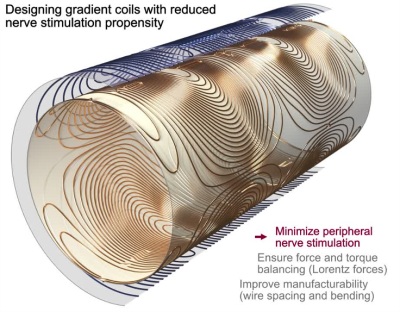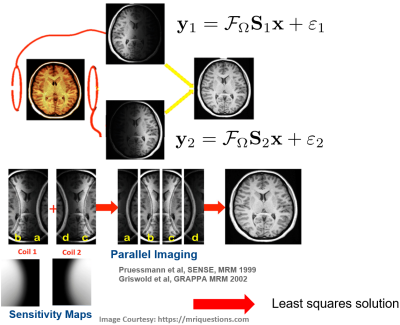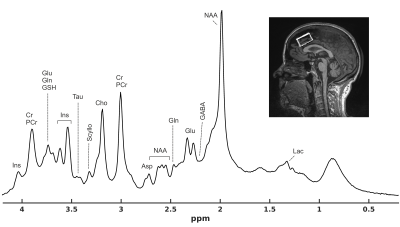Weekend Course
MR Physics II
ISMRM & ISMRT Annual Meeting & Exhibition • 04-09 May 2024 • Singapore

| 13:00 |
 |
Spatial Encoding: Gradients & Beyond
Jason Stockmann
Keywords: Image acquisition: Sequences, Physics & Engineering: Physics, Image acquisition: Artefacts This talk starts from basic principles of the Fourier transform to build intuition for how linear gradient coil fields perform spatial encoding in MRI. We will review k-space and how to set basic imaging parameters related to FOV, resolution, etc. A few basic k-space trajectories and their imaging properties (such as point spread function) and associated artifacts will be discussed. We will then consider imperfections in spatial encoding arising from gradient eddy currents and methods for correcting these effects. Finally, we will look at emerging methods for spatial encoding including the nonlinear gradients and their associated imaging properties and artifacts. |
| 13:25 |
Image Acquisition & Reconstruction
Jennifer McNab
|
|
| 13:50 |
 |
Acceleration Through Parallel Imaging & Compressed Sensing
Philippe Ciuciu, Chaithya Giliyar Radhakrishna
Keywords: Image acquisition: Fast imaging, Image acquisition: Reconstruction Magnetic Resonance Imaging (MRI) is a non-invasive medical imaging technique that has emerged as a pivotal clinical diagnostic tool over the last decades. Yet, its extended scanning times often compromise patient comfort and attainable image resolution. In this course, I will review standard acceleration techniques to shorten MRI scans: First, I will discuss parallel imaging methods based on multicoil acquisition, deterministic under-sampling in k-space and linear image reconstruction. Second, I will expose how Compressed Sensing, which relies on incoherent under-sampling, sparsity and non-linear image reconstruction, has been instantiated in MRI, notably to reach higher acceleration regimes. |
| 14:15 |
Automated Design of MRI Sequences with Deep Learning
Jongho Lee
Keywords: Image acquisition: Machine learning This presentation delves into the innovative utilization of deep learning methodologies in crafting MRI sequences. Firstly, the talk addresses the automation of designing specific elements within MRI sequences, such as RF pulse design and gradient waveform design. Then, we will continue to explore how deep learning facilitates the timing of MRI sequence blocks and k-space acquisition order. Related to these topics, the presentation will cover the co-design paradigms of acquisition and reconstruction to achieve optimal performance in final outcomes. Lastly, development of novel MRI sequences targets for specific or even unknown contrasts will be explained. |
|
| 14:40 |
Break & Meet the Teachers |
|
| 15:10 |
Encoding Biophysical Properties
Arvin Arani
Keywords: Contrast mechanisms: Elastography, Contrast mechanisms: Diffusion, Contrast mechanisms: Perfusion Physical phenomena such as diffusion, perfusion, blood flow, hemodynamics, and tissue biomechanical properties impact the complex MRI signal (magnitude and phase). MRI pulse sequence strategies can be used to efficiently encode the coherent and or incoherent motion associated with these phenomena. Post-processing techniques can then be employed to generate qualitative and/or quantitative images mapping these biophysical properties. This course will look at the basic physics behind each phenomenon, mathematically describe its impact on the MRI signal, and present simple pulse sequence strategies to encode this information. |
|
| 15:35 |
 |
Spectral Encoding: Fundamentals & Challenges
Ralf Mekle
Keywords: Contrast mechanisms: Spectroscopy, Contrast mechanisms: Spectroscopic Imaging (MRSI), Neuro: Brain Spectral encoding provides a means to obtain additional and often complementary information in comparison to magnetic resonance imaging (MRI). Using the chemical shift σ in MR spectroscopy (MRS) metabolic information can be extracted from resulting spectra acquired as single voxel or multi-voxel MR spectroscopic imaging (MRSI) data. The composition of MR spectra for sample molecules is outlined. In addition, typical acquisition protocols and more advanced MRS methodology with a particular importance of required adjustments and including fast MRSI schemes are presented. Metabolite quantification is briefly addressed. Finally, remaining challenges including the relatively low sensitivity and possible amendments are discussed. |
| 16:00 |
X-Nuclei: Surprising Opportunities Beyond Protons
Yuhei Takado
Keywords: Contrast mechanisms: Non-Proton, Contrast mechanisms: Hyperpolarization, Contrast mechanisms: Spectroscopy While conventional MRI predominantly focuses on proton imaging due to its superior signal sensitivity, MR imaging inherently extends to all objects with MR-detectable nuclei. This seminar explores the diverse applications of MRI and MRS beyond protons, targeting biologically significant nuclei. Key distinctions from proton imaging include sensitivity variations among nuclei. Understanding these differences unlocks the potential for experiments exploiting X-nuclei MRI. Techniques to enhance X-nuclei sensitivity, such as increasing magnetic field strength, alongside specialized methods like hyperpolarization, are elucidated. The seminar aims to provide valuable insights for conducting experiments with X-nuclei, covering differences, examples, sensitivity enhancement strategies, and specialized methodologies. |
|
| 16:25 | Meet the Teachers |
The International Society for Magnetic Resonance in Medicine is accredited by the Accreditation Council for Continuing Medical Education to provide continuing medical education for physicians.